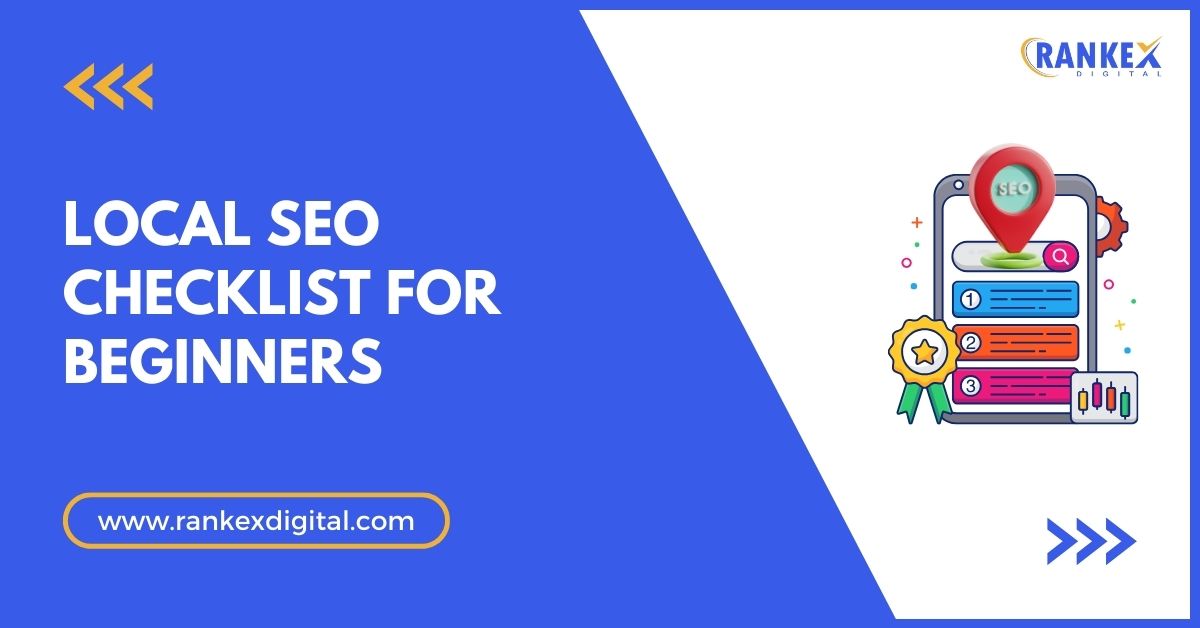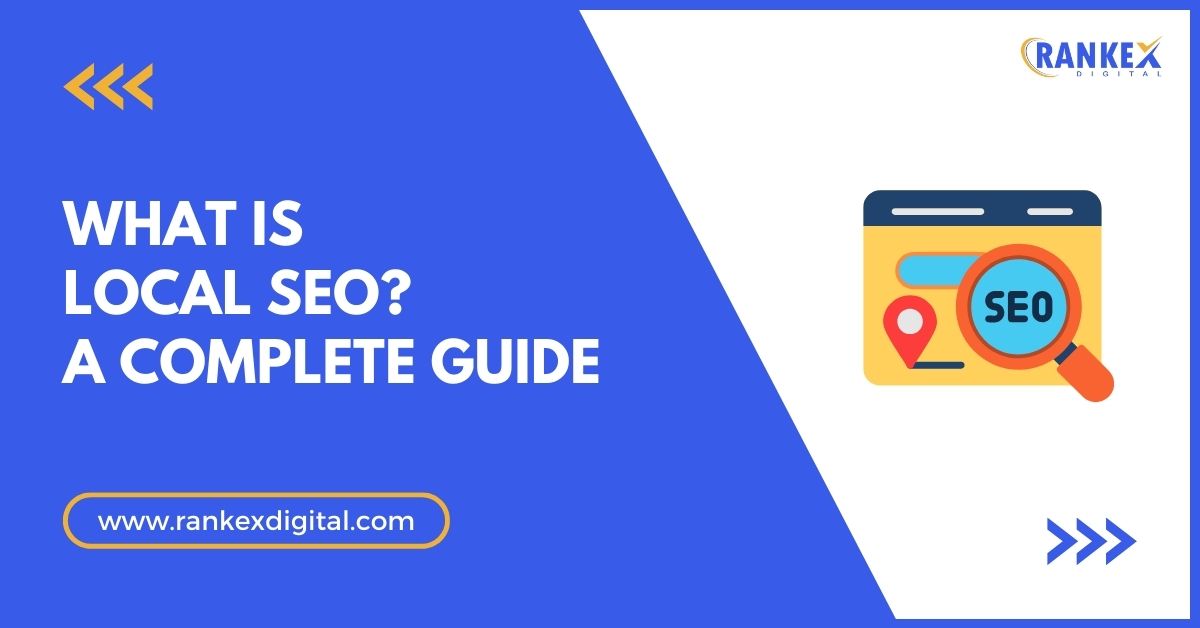Search Engine Optimization (SEO) is how people find your website through Google.
It’s not just about stuffing keywords into blog posts.
It’s about understanding what people want — and creating content that helps them.
If you’re starting a blog, an online store, or any kind of business website, you need an SEO strategy.
Without it, your content won’t get seen — no matter how good it is.
Table of Contents
- 1 What Is an SEO Strategy?
- 2 Set Clear SEO Goals
- 3 Understand Your Audience and Niche
- 3.1 Why Audience Research Matters
- 3.2 Step 1: Know Who You’re Helping
- 3.3 Step 2: Create a Simple Audience Persona
- 3.4 Step 3: Research Where They Hang Out
- 3.5 Step 4: Find Your Niche
- 3.6 Step 5: Match Content to Intent
- 3.7 Quick Tools to Understand Your Audience
- 3.8 Example: Finding an Audience for a Personal Finance Blog
- 4 Keyword Research Made Simple
- 4.1 Why Keywords Matter
- 4.2 Step 1: Brainstorm What People Might Search
- 4.3 Step 2: Use Free Keyword Tools
- 4.4 Step 3: Focus on Long-Tail Keywords
- 4.5 Step 4: Understand Keyword Intent
- 4.6 Step 5: Build a Keyword List
- 4.7 Step 6: Avoid These Common Mistakes
- 4.8 Step 7: Use Keywords Naturally in Your Content
- 4.9 A Quick Example: Keyword Research for a Travel Blog
- 5 5. Plan Your SEO Content Strategy
- 5.1 Why a Content Strategy Matters
- 5.2 Step 1: Map Keywords to the Buyer Journey
- 5.3 Step 2: Create Pillar Pages + Topic Clusters
- 5.4 Step 3: Choose Content Types That Work
- 5.5 Step 4: Build a 30-Day Content Calendar
- 5.6 Step 5: Update Old Content
- 5.7 Step 6: Track Which Content Performs Best
- 5.8 Common Beginner Mistakes to Avoid
- 6 6. On-Page SEO Basics
- 6.1 What Is On-Page SEO?
- 6.2 1. Craft a Strong Title Tag
- 6.3 2. Write a Compelling Meta Description
- 6.4 3. Use Proper Header Tags (H1, H2, H3…)
- 6.5 4. Place Keywords Smartly
- 6.6 5. Optimize Your Images
- 6.7 6. Use Internal Links
- 6.8 7. Improve Readability
- 6.9 8. Use SEO-Friendly URLs
- 6.10 Beginner Mistakes to Avoid
- 7 7. Off-Page SEO & Link Building 101
- 8 Technical SEO: Easy Wins for Beginners
- 8.1 What Is Technical SEO?
- 8.2 1. Mobile-Friendliness
- 8.3 2. Website Speed
- 8.4 3. Secure Your Website (SSL)
- 8.5 4. Fix Crawl Errors
- 8.6 5. Submit Your Sitemap
- 8.7 6. Check Robots.txt File
- 8.8 7. Avoid Duplicate Content
- 8.9 8. Use Clean URL Structure
- 8.10 9. Internal Linking Strategy
- 8.11 10. Keep Technical SEO Simple
- 9 Track and Measure Your SEO Progress
- 9.1 1. Set Up Google Search Console
- 9.2 2. Set Up Google Analytics 4 (GA4)
- 9.3 3. Use Rank Tracking Tools
- 9.4 4. Monitor Backlinks
- 9.5 5. Check Technical Health Regularly
- 9.6 6. Review SEO Goals Every Month
- 9.7 7. Track Local SEO (If Relevant)
- 9.8 8. Keep a Simple SEO Dashboard
- 9.9 9. Track Competitor Performance
- 9.10 10. Keep It Actionable
- 10 Common SEO Mistakes Beginners Should Avoid
- 10.1 1. Keyword Stuffing
- 10.2 2. Ignoring Search Intent
- 10.3 3. Writing for Search Engines, Not Humans
- 10.4 4. Skipping Title Tags and Meta Descriptions
- 10.5 5. Not Optimizing for Mobile
- 10.6 6. Ignoring Site Speed
- 10.7 7. Forgetting to Link Internally
- 10.8 8. Not Tracking Results
- 10.9 9. Focusing Only on Traffic, Not Conversions
- 10.10 10. Giving Up Too Soon
- 11 Simple SEO Campaign Strategy Example
- 11.1 Goal: Rank a Blog Post for “Best Budget DSLR Cameras 2025”
- 11.2 Step 1: Research the Keyword
- 11.3 Step 2: Check the Competition
- 11.4 Step 3: Plan the Post
- 11.5 Step 4: Write and Optimize the Content
- 11.6 Step 5: Add Internal and External Links
- 11.7 Step 6: Submit to Google
- 11.8 Step 7: Track Performance
- 11.9 Result?
- 12 Final Tips for Long-Term SEO Success
- 13 Final Thought
Why Beginners Struggle with SEO
Most people give up early. Here’s why:
-
SEO sounds too technical
Meta tags, backlinks, crawlability — it can feel overwhelming at first. -
Too many tools and opinions
Every blog, YouTube video, and Twitter thread says something different. -
No clear starting point
You don’t know what to focus on first — keywords, writing, or site speed?
The result?
People get stuck, or they keep doing random things and hope for the best.
But here’s the truth:
You don’t need to be an expert.
You just need a clear, step-by-step plan — and the discipline to follow it.
This guide gives you that plan.
No fluff, no jargon. Just real steps that work.
What Is an SEO Strategy?
An SEO strategy is your plan to bring in traffic from Google.
It’s how you:
-
Create content people are searching for
-
Help Google understand and rank your site
-
Build trust with other websites (so they link to you)
-
Improve over time based on real data
It’s not about tricks.
It’s about helping people — and proving to Google that you do it well.
What’s Included in a Good SEO Strategy?
Here’s what your plan should cover:
-
Keyword Research
What are people typing into Google?
You need to know this before you write anything. -
Content Planning
Decide which blog posts, pages, or guides to publish — based on search demand. -
On-Page SEO
Optimize each page using proper title tags, headings, keywords, and internal links. -
Off-Page SEO
Get backlinks from other websites to boost your credibility. -
Technical SEO
Make sure your site loads fast, is mobile-friendly, and doesn’t have broken links. -
Performance Tracking
Use tools like Google Analytics and Search Console to see what’s working — and fix what’s not.
Each part builds on the other.
Skip one, and your strategy weakens.
A Simple Example: Starting a Food Blog
Let’s make it real.
You want to start a food blog.
Without an SEO strategy:
-
You post random recipes each week
-
You pick titles based on what sounds nice
-
You hope Google shows your content
What happens?
Almost no traffic. Your blog gets buried.
With an SEO strategy:
-
You research what people search for:
e.g., “easy vegan dinner” or “meal prep for beginners” -
You write a helpful recipe post that targets one of those keywords
-
You use a clear title, descriptive meta description, and proper headers
-
You link to related recipes (like vegan lunches or snacks)
-
You promote the post in cooking forums and on Pinterest
-
You monitor how it performs in Google — and update it over time
Now, you’re not just writing recipes —
You’re solving a problem for a real person looking for an “easy vegan dinner.”
That’s how SEO turns content into traffic.
Why You Need an SEO Strategy
If you publish content without a strategy:
-
You’ll write dozens of posts that no one finds
-
You might rank for random or irrelevant keywords
-
You’ll lose to competitors who are more focused
But with a clear plan:
-
You attract people who are actively searching for what you offer
-
You build trust and authority over time
-
You turn casual visitors into subscribers, customers, or loyal readers
And remember:
You don’t need to get everything right from day one.
You just need to start — and keep improving.
Set Clear SEO Goals
Before you start writing content or doing keyword research, stop and ask:
What do I want from SEO?
Most beginners skip this part. They start blogging or optimizing without any real direction.
That leads to random results — and burnout.
But when you have clear goals, SEO becomes a focused, measurable system.
What Are SEO Goals?
SEO goals are specific outcomes you want from your efforts.
They give you direction and help you track progress.
Here are a few examples:
-
Get 5,000 monthly visitors to your blog
-
Rank in the top 3 on Google for “best protein powder for beginners”
-
Get 50 new leads per month from organic search
-
Increase product sales by 25% through SEO
-
Build backlinks from 20 high-authority sites
Notice something?
Each goal is clear, specific, and measurable.
That’s how you stay focused and know if SEO is working.
Align SEO with Business Goals
SEO shouldn’t live in its own bubble.
It needs to support your bigger goals:
-
Are you trying to sell products?
→ SEO should target keywords with buying intent (e.g., “best budget DSLR 2025”) -
Are you growing a YouTube channel?
→ Use blog content to drive search traffic to your videos. -
Are you building an email list?
→ Optimize landing pages and lead magnets for SEO.
If your SEO efforts don’t support your business, you’re wasting time.
For B2B teams—especially SaaS—working with a focused SaaS seo agency helps tie keyword research, product-led content, and technical fixes to real lead generation goals.
Use SMART SEO Goals
Use the SMART framework to set better goals:
| Element | Description | Example |
|---|---|---|
| Specific | Clear and focused | “Rank top 3 for ‘vegan protein bars’” |
| Measurable | Can you track it? | Yes, with Google Search Console |
| Achievable | Realistic with your time and resources | Yes, with 3 months of work |
| Relevant | Tied to your business or content | You sell vegan snacks |
| Time-bound | Has a deadline | Within the next 90 days |
This keeps you from setting vague goals like “get more traffic.”
Instead, aim for:
“Get 1,000 monthly visitors to my product page within 60 days.”
Start Small and Grow
If you’re a beginner, don’t chase huge goals right away.
Start small and build up.
Some simple starter SEO goals:
-
Write 1 blog post per week for 3 months
-
Get your first 5 backlinks
-
Reach 1,000 monthly pageviews
-
Rank on page 1 for a low-competition keyword
Hit those, then go bigger.
Track Progress (Even If You’re New)
You don’t need fancy tools to track goals.
Just use:
-
Google Analytics 4 — to track traffic
-
Google Search Console — to monitor rankings and impressions
-
A simple spreadsheet or Notion board — to track your tasks and progress
Make goal tracking part of your weekly or monthly routine.
Example: Goals for a New Travel Blog
Let’s say you’re launching a travel blog.
Your SEO goals could be:
-
Publish 10 blog posts targeting low-competition travel keywords in 60 days
-
Get 1,000 monthly visitors by month 3
-
Get 3 backlinks from travel directories or guest posts
-
Rank in the top 10 for “budget travel tips 2025”
Now you have a clear SEO target — and you can build your content around it.
You don’t need perfect goals.
You just need goals that give you focus.
Without goals, you’re just guessing.
With goals, you’re building a real system that brings results.
Understand Your Audience and Niche
Before writing anything, you need to know:
Who are you trying to reach?
What do they care about?
What problems are they trying to solve?
If you skip this step, your content won’t connect — and your SEO will fall flat.
Why Audience Research Matters
SEO isn’t just about search engines.
It’s about people.
-
Google ranks content that matches what people are searching for.
-
If your content doesn’t solve their problem, it won’t rank — or convert.
That’s why audience research is the first real step in building an SEO strategy.
Step 1: Know Who You’re Helping
Ask simple questions like:
-
Who is my ideal reader or customer?
-
What questions are they asking online?
-
What struggles or goals do they have?
Let’s say you’re starting a fitness blog for beginners.
Your audience might be:
-
People who just joined a gym
-
Busy professionals trying to stay fit
-
Beginners confused by workout plans
You’re not writing for athletes.
You’re writing for regular people who want simple advice.
Step 2: Create a Simple Audience Persona
An audience persona is a short profile that describes your typical reader.
Example:
Name: Rahul
Age: 29
Job: IT professional
Goal: Lose weight and build strength
Challenge: Doesn’t know what exercises to do
Search habits: Looks for home workouts and beginner meal plans on Google
Keep it simple. You don’t need a fancy design — just know who you’re talking to.
Step 3: Research Where They Hang Out
To understand what your audience wants, go where they already ask questions:
-
Google (type in your topic and see what people ask in “People also ask”)
-
Reddit (search your niche: r/fitness, r/personalfinance, etc.)
-
Quora (look at trending questions in your topic)
-
YouTube comments (check what people say under popular videos)
-
Amazon reviews (see what people say about books in your niche)
You’re looking for repeated pain points, questions, and language.
Example: If lots of people ask “what to eat after a workout,” that’s a perfect blog post idea.
Step 4: Find Your Niche
A niche is the specific corner of the internet you want to own.
Don’t try to be everything for everyone.
Instead, find your edge:
| Broad Topic | Narrow Niche Example |
|---|---|
| Fitness | Home workouts for busy moms |
| Travel | Budget travel for solo backpackers |
| Food | 10-minute vegan recipes |
| Finance | Money tips for freelancers |
| Tech | Tech reviews for beginners |
Step 5: Match Content to Intent
Different people search with different goals.
Your job is to match the right content to the right intent.
| Search Intent | Example Keyword | Content Type |
|---|---|---|
| Informational | “how to start running” | Blog post, guide |
| Navigational | “Nike running shoes review” | Product page, review |
| Transactional | “buy budget treadmill” | Product page, affiliate page |
| Comparative | “best protein powder 2025” | List post, comparison |
Understanding intent means you don’t just rank — you attract visitors who take action.
Quick Tools to Understand Your Audience
-
Google Trends – See what’s trending in your niche
-
AnswerThePublic – Find real questions people ask
-
Search Console – See what people are already searching to find you
-
Reddit/Quora – Free insight into problems and language your audience uses
Example: Finding an Audience for a Personal Finance Blog
Let’s say you want to start a blog on money tips.
Instead of writing general finance advice for everyone…
Focus on:
-
Young adults who just got their first job
-
Their problems: budgeting, student loans, saving for travel
-
Write using simple, relatable language
-
Use keywords they search: “how to save ₹5000/month,” “budget apps India,” etc.
Now your content speaks directly to them — and search engines reward that.
Don’t write for search engines.
Write for people.
SEO works best when you know who you’re helping.
Keyword Research Made Simple
Keyword research sounds complicated — but it doesn’t have to be.
Think of keywords as the exact words people type into Google when looking for something.
If your content uses those words naturally, and answers the searcher’s question clearly, you have a strong chance of ranking.
Let’s break it down in a way that makes sense for beginners.
Why Keywords Matter
-
Keywords help Google understand what your page is about.
-
They help you attract the right visitors to your site.
-
Good keyword research saves you from writing content that no one searches for.
Without keyword research, you’re guessing.
With keyword research, you’re creating content people are already looking for.
Step 1: Brainstorm What People Might Search
Start with simple questions:
-
What would someone type into Google to find this?
-
What problems does my content solve?
-
What topics are common in my niche?
Example (Fitness Blog):
-
“home workouts for beginners”
-
“how to lose belly fat”
-
“best protein powder for women”
Make a big list of these ideas.
Don’t worry about tools yet. Just think like your reader.
Step 2: Use Free Keyword Tools
Once you have ideas, it’s time to use free tools to check:
-
Search volume (how many people search this monthly)
-
Competition (how hard it is to rank)
-
Intent (what the person wants when they search)
Free Tools to Start With:
| Tool | What It Does |
|---|---|
| Google Search | Shows autocomplete and “People also ask” |
| Ubersuggest (free) | Search volume, related keywords |
| Google Keyword Planner | Great for search volume + ideas |
| AnswerThePublic | Great for question-based keywords |
| Keyword Surfer (Chrome Extension) | Shows search volume as you browse |
Use these to turn your brainstormed list into real data.
Step 3: Focus on Long-Tail Keywords
Long-tail keywords are longer, more specific search phrases.
Example:
-
Short-tail: “weight loss”
-
Long-tail: “easy weight loss workout at home for beginners”
Why long-tail is better for beginners:
-
Less competition
-
Easier to rank
-
More targeted traffic
-
Often higher conversion rates
You might get 200 visitors from a long-tail keyword — but they’re the right visitors.
Step 4: Understand Keyword Intent
We touched on this earlier.
But here’s how to apply it to your keyword research.
| Intent | User Wants To… | Keyword Example |
|---|---|---|
| Informational | Learn something | “how to bake sourdough bread” |
| Navigational | Go to a specific site | “YouTube SEO tips” |
| Transactional | Buy something | “best laptops under ₹50000” |
| Comparison | Choose between options | “iPhone 14 vs Galaxy S23” |
When you choose a keyword, make sure your content matches that intent.
If the keyword is informational, write a helpful blog post — not a sales page.
Step 5: Build a Keyword List
Once you’ve collected your keywords:
-
Group similar ones together
-
Label them by intent
-
Prioritize based on relevance, search volume, and ranking difficulty
Example:
| Keyword | Volume | Difficulty | Intent |
|---|---|---|---|
| “easy vegan dinner recipes” | 6,500 | Low | Informational |
| “best vegan protein powder India” | 2,000 | Medium | Transactional |
| “vegan meal plan for beginners pdf” | 1,200 | Low | Informational |
This gives you clear direction on what to write — and what to write first.
Step 6: Avoid These Common Mistakes
-
Chasing only high-volume keywords — they’re harder to rank
-
Ignoring intent — leads to traffic that doesn’t convert
-
Keyword stuffing — repeating the same word unnaturally
-
Forgetting to check competition — some keywords are dominated by big sites
Instead, start small. Go after keywords that are relevant, lower in competition, and useful for your audience.
Step 7: Use Keywords Naturally in Your Content
Once you’ve picked a keyword:
-
Include it in your title
-
Add it to your URL and meta description
-
Use it in the first 100 words
-
Mention it naturally in headings (H2, H3) and body text
-
Use related keywords to give context
But don’t overdo it.
Google understands synonyms. Write naturally, for humans.
A Quick Example: Keyword Research for a Travel Blog
Let’s say your blog is about budget travel in India.
You start with “cheap travel tips India.”
Ubersuggest shows related keywords like:
-
“budget travel destinations in India”
-
“how to travel cheap in India”
-
“budget backpacking guide India”
You choose: “budget travel destinations in India”
Now your next blog post could be:
“Top 10 Budget Travel Destinations in India for 2025”
And you’ll be targeting a phrase people already search for.
Keyword research is not about chasing traffic.
It’s about understanding your audience — and writing content they’re already looking for.
5. Plan Your SEO Content Strategy
Now that you’ve found the right keywords, what’s next?
You need a plan — a simple system that tells you:
-
What type of content to create
-
What topics to cover
-
How to organize your site for SEO
That’s what your SEO content strategy is all about.
Why a Content Strategy Matters
Without a plan:
-
You write random blog posts
-
Your site feels disorganized
-
You miss important ranking opportunities
With a strategy:
-
Your content has structure
-
Google understands your topics better
-
Visitors stay longer and explore more pages
Step 1: Map Keywords to the Buyer Journey
People search differently depending on where they are in their journey.
Here’s how to break it down:
| Stage | Search Intent | Content Type | Example Keyword |
|---|---|---|---|
| Top of Funnel | Learn / Discover | Blog posts, How-tos, Guides | “what is a keto diet” |
| Middle of Funnel | Compare / Consider | Listicles, Comparisons | “best keto cookbooks 2025” |
| Bottom of Funnel | Buy / Decide | Product pages, Case studies | “buy keto meal plan subscription” |
Make sure you have content for each stage.
Step 2: Create Pillar Pages + Topic Clusters
This structure helps both users and search engines navigate your site.
Pillar Page:
-
A broad guide on a main topic
-
Example: “The Complete Beginner’s Guide to Keto”
Cluster Content:
-
Detailed posts that link to the pillar page
-
Example: “Top 10 Keto Breakfast Ideas”, “Keto Snacks You Can Make in 10 Minutes”
Use internal links to connect cluster content back to the main pillar page.
Step 3: Choose Content Types That Work
Different topics need different formats.
Here are some you can start with:
| Content Type | Best For | Example Title |
|---|---|---|
| Blog Post | Informational keywords | “7 Quick Vegan Lunch Recipes” |
| How-To Guide | Step-by-step topics | “How to Start a Travel Blog in 2025” |
| Listicle | Product reviews, tips | “Top 10 Budget Laptops Under ₹50,000 (India)” |
| Comparison Post | Buyer-focused queries | “Ahrefs vs Ubersuggest: Which One Should You Use?” |
| Case Study | Showcasing results | “How I Grew My Organic Traffic 3x in 90 Days” |
| FAQ Page | Answering multiple questions | “SEO for Beginners: Frequently Asked Questions” |
Don’t try to do everything.
Pick 1–2 formats that match your niche and audience.
Step 4: Build a 30-Day Content Calendar
Consistency matters more than perfection.
Start simple:
-
Aim to publish 1–2 quality posts per week
-
Mix top, middle, and bottom-funnel content
-
Use your keyword list to plan ahead
Example Content Calendar:
| Week | Post Title | Keyword | Stage |
|---|---|---|---|
| Week 1 | 7 Low-Carb Snacks for Office Workers | low-carb snacks for office | Top of Funnel |
| Week 2 | Best Protein Bars in India (2025 Edition) | best protein bars India 2025 | Middle of Funnel |
| Week 3 | How to Make Healthy Cookies at Home | healthy cookie recipe for beginners | Top of Funnel |
| Week 4 | Where to Buy Keto Snacks Online in India | buy keto snacks online | Bottom of Funnel |
Use tools like:
-
Google Sheets (free)
-
Trello or Notion (for planning)
Step 5: Update Old Content
SEO is not just about publishing new stuff.
It’s also about keeping your old content fresh.
Do this every 3–6 months:
-
Refresh stats and data
-
Add internal links to new posts
-
Update titles and meta descriptions
-
Improve formatting for readability
Google loves updated content.
Step 6: Track Which Content Performs Best
Use Google Search Console to check:
-
What posts get the most impressions and clicks
-
Which keywords are driving traffic
-
Which posts have high bounce rates (and need work)
Then double down on what works.
Common Beginner Mistakes to Avoid
-
Writing content with no keyword focus
-
Covering too many topics instead of one niche
-
Publishing lots of posts but no internal linking
-
Ignoring content that already exists on your site
Keep it simple. Stay consistent.
6. On-Page SEO Basics
On-page SEO is the part you control.
It’s how you optimize the content and structure of each page to help Google understand what it’s about.
If keyword research tells you what to write,
on-page SEO tells you how to present it for maximum visibility.
Let’s go step by step.
What Is On-Page SEO?
It’s everything you do on the page to improve rankings.
That includes:
-
Title tags
-
Meta descriptions
-
Header structure
-
Keyword placement
-
Internal links
-
Image optimization
-
Readability and formatting
1. Craft a Strong Title Tag
Your title tag is the clickable blue link in search results.
Google uses it to understand your page topic.
Users use it to decide whether to click.
How to write a good one:
-
Include your main keyword
-
Keep it under 60 characters
-
Make it clear and benefit-focused
Examples:
✅ “10 Best Budget Smartphones in India (2025)”
✅ “How to Start a Blog in 2025: Step-by-Step Guide for Beginners”
❌ “Home”
❌ “Welcome to My Website”
2. Write a Compelling Meta Description
The meta description appears below your title in search results.
It doesn’t directly affect rankings — but it does affect click-through rate.
Best practices:
-
Keep it under 155 characters
-
Include the main keyword
-
Summarize the page clearly
-
Add a call to action if it makes sense
Example:
Looking for affordable laptops in India? Check out our top 10 picks for 2025 — all under ₹50,000.
3. Use Proper Header Tags (H1, H2, H3…)
Headers structure your content.
-
H1 = Title of your page (used once)
-
H2 = Main sections
-
H3 = Sub-sections under H2
Google scans headers to understand your page.
Readers use them to navigate your content.
Example Structure:
H1: How to Bake Banana Bread
H2: Ingredients You’ll Need
H2: Step-by-Step Instructions
H3: Step 1: Preheat the Oven
H3: Step 2: Mix Ingredients
Don’t stuff keywords — but use them naturally in some headers.
4. Place Keywords Smartly
Use your main keyword in these places:
-
Title tag
-
Meta description
-
H1 (page title)
-
First 100 words of content
-
At least one H2 or H3
-
URL (if possible)
Use variations and related keywords too.
But don’t force them. Keep it natural.
5. Optimize Your Images
Google can’t “see” images — but it can read image data.
Basic image SEO:
-
Rename file before uploading:
bad: IMG_2928.jpggood: chocolate-chip-cookies.jpg -
Add ALT text describing the image:
Example:ALT="homemade chocolate chip cookies on a plate" -
Keep file sizes small for faster loading
(Use TinyPNG or Squoosh to compress) -
Use web-friendly formats:
.jpg,.png,.webp
6. Use Internal Links
Internal linking helps:
-
Users navigate your site
-
Google crawl and understand your pages
-
Spread link authority
Best practices:
-
Link to related blog posts or pages
-
Use descriptive anchor text
(not “click here” — instead: “see our beginner’s SEO checklist”) -
Add 2–5 internal links per post, depending on length
7. Improve Readability
If your content is hard to read, no one will stay.
Simple content = better SEO.
Tips:
-
Write short paragraphs (1–3 lines)
-
Use bullet points and numbered lists
-
Add plenty of white space
-
Use bold to highlight key points
-
Use plain, everyday language
Free tools:
8. Use SEO-Friendly URLs
Your URLs should be short, clean, and include your keyword.
Examples:
✅ yourdomain.com/vegan-snack-ideas
❌ yourdomain.com/page?id=12345&ref=blog
Avoid stop words like “and”, “or”, “the”.
Use hyphens to separate words.
Beginner Mistakes to Avoid
-
Using the same title tag on multiple pages
-
Writing generic meta descriptions
-
Stuffing keywords in every sentence
-
Forgetting to add ALT tags to images
-
Linking without context or relevance
When done right, on-page SEO sets the foundation for everything else.
Even one well-optimized blog post can rank and bring traffic for months or years.
7. Off-Page SEO & Link Building 101
You’ve created great content.
Your pages are well-optimized.
But if no other websites talk about you, Google won’t fully trust you.
That’s where off-page SEO comes in.
What Is Off-Page SEO?
Off-page SEO refers to anything done outside your website to improve rankings.
The main goal?
To build trust, authority, and credibility in the eyes of search engines.
The #1 part of off-page SEO is link building — getting backlinks from other websites.
Why Backlinks Matter
Think of backlinks as votes of confidence.
Each time a website links to you, it signals to Google:
“This content is valuable.”
The more quality backlinks you have:
-
The higher your authority
-
The better your rankings
-
The more organic traffic you can earn
Types of Backlinks (Simple Breakdown)
Not all links are equal.
Here are the key types:
| Type | What It Means | Good or Bad? |
|---|---|---|
| Editorial links | Natural links from content (best kind) | ✅ Good |
| Guest post links | Links you add in articles you write | ✅ Good |
| Directory links | Links from business or niche directories | ✅ OK |
| Forum or comment links | Links in community discussions | ⚠️ Weak |
| Paid links | Links bought with money (risky) | ❌ Bad |
| Spam links | Irrelevant or unnatural links | ❌ Very Bad |
5 Easy Link Building Methods for Beginners
You don’t need advanced tools or money to get started.
Here are beginner-friendly options:
1. Write Guest Posts
Write helpful articles for other websites in your niche.
In return, you can usually include 1–2 backlinks to your site.
Steps:
-
Find blogs that accept guest posts (Google: “write for us + your topic”)
-
Pitch relevant topics
-
Write high-quality content
-
Include a contextual link to your site
2. List Your Site in Directories
Start with:
-
Google Business Profile (if local)
-
Bing Places
-
Yelp
-
JustDial (India)
-
Niche directories (e.g., travel, food, tech)
These help with both local SEO and general visibility.
Make sure:
-
NAP info (Name, Address, Phone) is consistent
-
Your description is keyword-rich
3. Use HARO (Help A Reporter Out)
Journalists post questions. You reply with expert quotes.
If selected, they link to your site.
Sign up at helpareporter.com
Check emails 3 times a day.
Answer quickly and clearly.
4. Create Link-Worthy Content
Some content attracts backlinks naturally.
Try these formats:
-
Original research or statistics
-
Ultimate guides or how-tos
-
Free tools or templates
-
Case studies
Example:
Write “The State of Blogging in India 2025” with stats. Bloggers may reference it.
5. Share Content on Social Media
Social shares aren’t direct backlinks.
But they help your content get noticed.
The more visibility = higher chance someone links to you.
Platforms to use:
-
LinkedIn (great for B2B)
-
Twitter / X
-
Facebook groups
-
Reddit communities
-
Quora (answer with value + link only when relevant)
Common Mistakes to Avoid
-
Buying cheap backlinks (can get you penalized)
-
Using the same anchor text everywhere
-
Linking from irrelevant websites
-
Ignoring broken link opportunities
Keep It Natural
Google values quality over quantity.
One backlink from a high-authority site (like Forbes, HubSpot, or a government website)
is more powerful than 100 links from low-quality blogs.
Track Your Backlinks
Free tools:
Check:
-
Who links to you
-
Which pages are popular
-
Anchor text used
This helps you repeat what works.
Final Word on Link Building
Start small.
Be consistent.
Focus on relationships, not shortcuts.
Link building takes time — but it’s worth it.
Technical SEO: Easy Wins for Beginners
You don’t need to be a developer to improve your site’s technical health.
This part of SEO helps search engines:
-
Crawl your website
-
Understand your content
-
Load your pages faster
And it helps your visitors stay longer and engage more.
Let’s break it down.
What Is Technical SEO?
It’s all the stuff “under the hood” of your website that affects:
-
Speed
-
Mobile experience
-
Structure
-
Crawlability
-
Security
If your site is hard to access or slow to load, your rankings suffer.
1. Mobile-Friendliness
Most users now browse the web on phones.
Google uses mobile-first indexing. That means it looks at your mobile version first when ranking.
Check if your site is mobile-friendly:
Tips:
-
Use a responsive design (adjusts to any screen size)
-
Avoid popups or small buttons
-
Test your site on various phones
2. Website Speed
Users hate slow websites.
So does Google.
Fast sites = lower bounce rate + better rankings.
Free tools to test speed:
Improve speed by:
-
Compressing images (use TinyPNG)
-
Enabling browser caching
-
Using a fast hosting provider
-
Avoiding heavy plugins or themes
-
Installing a CDN (Cloudflare is free)
3. Secure Your Website (SSL)
Sites with HTTPS are secure.
Google gives them preference.
Check your URL:
-
It should start with
https://, nothttp://
If it doesn’t:
-
Get an SSL certificate (many hosting providers offer it free)
4. Fix Crawl Errors
If Google can’t crawl your site, it can’t rank your pages.
Use Google Search Console:
-
Go to “Pages” → Look for “Crawled – currently not indexed”
-
Check why certain URLs are excluded
Common fixes:
-
Remove broken pages
-
Add missing internal links
-
Update noindex settings
5. Submit Your Sitemap
A sitemap helps Google discover your pages.
It’s a list of all your URLs.
How to create a sitemap:
-
Use plugins like Yoast SEO or Rank Math (WordPress)
-
Use XML-Sitemaps.com
Submit it:
-
Go to Google Search Console → “Sitemaps”
-
Add your sitemap URL (e.g.,
https://yoursite.com/sitemap.xml)
6. Check Robots.txt File
This file tells search engines what to crawl or ignore.
Make sure you’re not accidentally blocking important pages.
Visit https://yourwebsite.com/robots.txt
It should allow access to:
User-agent: *
Disallow:
Avoid:
Disallow: /
(That blocks everything)
7. Avoid Duplicate Content
Duplicate content confuses search engines.
Common causes:
-
Same content on multiple pages
-
HTTP vs. HTTPS versions
-
www vs. non-www
Fix it by:
-
Setting a preferred domain in Google Search Console
-
Using canonical tags (plugins handle this)
-
Redirecting duplicates to the main page
8. Use Clean URL Structure
Your URLs should be short and descriptive.
✅ Good:/seo-strategy-beginners
❌ Bad:/page.php?id=598320
Tips:
-
Use keywords
-
Avoid numbers or symbols
-
Use hyphens, not underscores
9. Internal Linking Strategy
Link between your own pages.
This helps:
-
Distribute authority
-
Improve navigation
-
Keep users engaged longer
Use descriptive anchor text.
Avoid “click here” — instead, say “learn how to do keyword research.”
10. Keep Technical SEO Simple
You don’t need to fix everything at once.
Start with:
-
Mobile responsiveness
-
Site speed
-
Submitting a sitemap
Do small checks monthly.
Track and Measure Your SEO Progress
You can’t improve what you don’t measure.
Tracking your SEO performance helps you:
-
See what’s working
-
Find what needs fixing
-
Stay on top of your goals
Even if you’re a beginner, this step is simple with the right tools.
1. Set Up Google Search Console
This is your direct link to Google’s data about your site.
Why it matters:
-
Tracks clicks and impressions
-
Shows what keywords you rank for
-
Finds crawling/indexing issues
How to set it up:
-
Visit: Google Search Console
-
Add and verify your website
-
Submit your sitemap
Key reports to check:
-
Performance: See traffic, keywords, and top pages
-
Pages: Find indexing errors
-
Links: View your internal and external links
2. Set Up Google Analytics 4 (GA4)
This tells you what visitors do on your site.
Why it’s useful:
-
Tracks bounce rate and time on site
-
Shows top-performing content
-
Helps identify user behavior
How to use it:
-
Go to Google Analytics
-
Create a GA4 property
-
Install the tracking code or use a plugin (like Site Kit for WordPress)
Metrics to watch:
-
Sessions (visits)
-
Average engagement time
-
Pages per session
-
Conversion events (like contact form submits)
3. Use Rank Tracking Tools
These help you monitor keyword positions over time.
Free and paid options:
-
Ubersuggest (free limited plan)
-
SERPWatcher by Mangools
-
SE Ranking
-
Ahrefs (expensive but powerful)
Track:
-
Your top 10 keywords
-
How rankings change weekly
-
Which pages are climbing or falling
4. Monitor Backlinks
Backlinks help your domain authority grow.
Use tools like:
-
Ahrefs Free Backlink Checker
-
Ubersuggest
-
Google Search Console (under “Links”)
Check for:
-
Total number of backlinks
-
Referring domains
-
Spammy or irrelevant links (disavow if needed)
5. Check Technical Health Regularly
Don’t wait for traffic to drop.
Do monthly or bi-weekly health checks:
-
Use Screaming Frog (desktop SEO crawler)
-
Use Ahrefs Site Audit
-
Use Google Search Console’s “Pages” report
Focus on fixing:
-
404 errors (broken pages)
-
Missing meta tags
-
Slow-loading pages
-
Mobile usability issues
6. Review SEO Goals Every Month
Revisit your SMART goals:
-
Did organic traffic increase?
-
Are conversions up?
-
Which content pieces performed best?
Adjust based on the data:
-
Double down on high-performing content
-
Update low-traffic posts
-
Try new keywords or formats
7. Track Local SEO (If Relevant)
If you serve a specific location:
-
Use Google Business Profile Insights
-
Track local rankings using BrightLocal or Whitespark
-
Monitor reviews, directions, and phone calls
8. Keep a Simple SEO Dashboard
Use tools like:
-
Google Looker Studio (formerly Data Studio)
-
Notion, Trello, or Google Sheets
Create a dashboard showing:
-
Monthly traffic
-
Keyword wins/losses
-
New backlinks
-
Fixes completed
9. Track Competitor Performance
Stay aware of what others are doing.
Use:
-
Ahrefs or Semrush to check competitor traffic and keywords
-
Google Alerts to monitor their new content
-
SimilarWeb to estimate traffic
Ask:
-
What topics are they ranking for?
-
Are they getting backlinks you could also get?
-
How often are they publishing?
10. Keep It Actionable
Tracking isn’t just for reports. Use it to act.
If you see a keyword going up → optimize more around it.
If a blog loses traffic → update it.
If your bounce rate is high → improve page layout and clarity.
Common SEO Mistakes Beginners Should Avoid
SEO is a long-term game.
One wrong move can hold back your progress for months.
Here are the most common mistakes beginners make — and how to avoid them.
1. Keyword Stuffing
What it is:
Using your target keyword too many times in a page or blog post.
Why it’s bad:
It makes content hard to read, looks spammy, and may get penalized.
How to fix:
-
Use the keyword naturally in key places (title, headers, intro, conclusion)
-
Add related keywords and synonyms
-
Focus on helping the reader, not tricking search engines
2. Ignoring Search Intent
What it is:
Creating content that doesn’t match what users are actually looking for.
Example:
Someone searches for “best running shoes” — they expect a list, not a long essay about the history of running.
How to fix:
-
Google your keyword first
-
Study the top 3–5 results
-
Match the format, tone, and depth of what’s ranking
3. Writing for Search Engines, Not Humans
Why this fails:
If readers leave your site quickly, Google will notice — and drop your rankings.
Avoid this by:
-
Writing clear, helpful content
-
Using short paragraphs and bullet points
-
Making your content easy to scan
4. Skipping Title Tags and Meta Descriptions
These show up in Google search results.
Bad example:
-
Title: “Home”
-
Description: “Welcome to our website.”
Better example:
-
Title: “Best Budget Cameras for Beginners in 2025”
-
Description: “Compare top beginner-friendly cameras under $500 with specs, pros, and FAQs.”
Use tools like Yoast or Rank Math to help.
5. Not Optimizing for Mobile
Over 60% of Google searches come from mobile devices.
How to fix:
-
Use a mobile-responsive theme
-
Test your site on Google’s Mobile-Friendly Test
-
Avoid small fonts and cluttered layouts
6. Ignoring Site Speed
Slow sites drive users away.
What slows your site down:
-
Large image files
-
Too many plugins
-
Poor hosting
How to improve speed:
-
Use tools like PageSpeed Insights
-
Compress images with TinyPNG
-
Use a caching plugin like WP Rocket or LiteSpeed Cache
7. Forgetting to Link Internally
Internal links help both users and search engines navigate your site.
What to do:
-
Link to 2–3 related articles from every post
-
Use descriptive anchor text
-
Update old posts to include links to new content
8. Not Tracking Results
If you don’t check your data, you won’t know what’s working.
What beginners miss:
-
Forgetting to set up Google Search Console and GA4
-
Not checking keyword rankings
-
Not reviewing top-performing content
Fix this by setting a monthly review day.
9. Focusing Only on Traffic, Not Conversions
Getting 10,000 visits is useless if no one signs up or buys.
What to do:
-
Add clear CTAs (calls to action)
-
Track conversions (forms, purchases, clicks)
-
Create content that aligns with each step of the buyer journey
10. Giving Up Too Soon
SEO takes time.
You might not see results in the first few weeks or even months.
Stay consistent:
-
Publish regularly (even once a week is fine)
-
Keep learning from what works
-
Think long term — SEO builds momentum
Simple SEO Campaign Strategy Example
Let’s put everything you’ve learned into action with a beginner-friendly SEO campaign example.
This step-by-step mini plan shows how to take one blog post and turn it into a ranking opportunity.
Goal: Rank a Blog Post for “Best Budget DSLR Cameras 2025”
Step 1: Research the Keyword
Primary keyword:best budget DSLR cameras 2025
Tools to use:
-
Google Search (check what’s already ranking)
-
Ubersuggest (to get related terms)
-
Google’s “People Also Ask” and related searches
Intent:
Buyers looking for recommendations and comparisons.
Step 2: Check the Competition
Search your keyword on Google.
Look at:
-
Title and format of top 3–5 results
-
How long the content is
-
What points they cover
-
Do they use tables, FAQs, affiliate links?
This helps you understand what Google expects for that keyword.
Step 3: Plan the Post
Content outline:
-
Intro: What makes a DSLR camera “budget-friendly”
-
Table of top picks
-
Individual reviews (short, useful)
-
Buyer’s guide (features to look for)
-
FAQs
-
Conclusion + CTA
Add related keywords:
-
Cheap DSLR
-
DSLR under $500
-
Beginner DSLR
-
Camera comparison 2025
Step 4: Write and Optimize the Content
Use On-Page SEO Tips:
-
Include keyword in H1 (main heading)
-
Use keyword in first 100 words
-
Add headers with related terms
-
Optimize images (file names + ALT text)
-
Link to related posts (internal links)
-
Write a clear meta title + meta description
Pro tip: Use formatting like bullet points, tables, and bold text to improve readability.
Step 5: Add Internal and External Links
Internal:
-
Link to related guides: “DSLR vs Mirrorless” or “Best Cameras for Beginners”
External:
-
Link to trusted sources: Canon, Nikon, B&H Photo
Step 6: Submit to Google
Once published:
-
Add the URL to Google Search Console
-
Share it on social media
-
Email it to your newsletter list (if you have one)
Optional:
-
Use HARO or Reddit to promote it
-
Reach out to blogs or camera communities
Step 7: Track Performance
After 2–4 weeks:
-
Check impressions and clicks in Google Search Console
-
See what keywords the post is showing up for
-
Update it with better headings or more info based on what’s working
Result?
In 1–3 months, if you stay consistent, your post can start ranking — and drive traffic, leads, or affiliate revenue.
Final Tips for Long-Term SEO Success
SEO success doesn’t happen overnight.
It’s a consistent effort — but the rewards grow over time.
Use these practical tips to stay on track and keep improving.
1. Stay Updated with Google Algorithm Changes
Google makes thousands of updates to its search algorithm every year. Some are small, others can completely change how your content ranks.
If you’re not paying attention to these changes, your rankings might drop — even if your content was doing well before.
What You Can Do:
-
Follow trusted SEO news sources
Sites like Search Engine Journal, Moz Blog, and Search Engine Roundtable regularly share algorithm updates in plain English. -
Sign up for Google Search Central Blog
It’s Google’s official source. You’ll get notified when they launch core updates or introduce new ranking factors. -
Use SEO tracking tools
Tools like SEMrush Sensor, MozCast, and Rank Ranger track algorithm fluctuations. Spikes in volatility often mean Google rolled out something big. -
Watch your analytics
A sudden drop or jump in organic traffic? That might mean an algorithm update hit your site — or helped it. Cross-check dates with update news. -
Test and adapt
After an update, review your top pages. Are they still ranking? If not, compare what’s now ranking above them. You’ll often spot content that’s fresher, better structured, or more helpful.
Example:
If Google releases an update prioritizing “Helpful Content,” then long articles filled with fluff may drop — while concise, direct, and reader-focused posts go up. Adjust accordingly.
Remember:
Google’s goal is simple — serve the best result for the searcher. If your content genuinely helps people, you’re already ahead of 90% of sites.
2. Focus on Quality Over Quantity
Publishing daily won’t help if your content is low-quality.
Instead:
-
Publish one great post per week
-
Make it helpful, clear, and better than what’s already out there
-
Update older posts regularly
3. Build Topic Authority
Google wants to rank trustworthy websites.
Build authority by:
-
Covering related topics in depth
-
Creating internal links between your content
-
Sticking to your niche or industry
4. Track What Works (and What Doesn’t)
Use tools like:
-
Google Analytics 4 to track traffic and conversions
-
Google Search Console to see what keywords you’re ranking for
-
Ubersuggest / Ahrefs for content ideas and backlinks
Look at:
-
Top-performing pages
-
Bounce rates
-
Time on site
-
Conversion actions (signups, clicks, downloads)
Double down on what’s working.
5. Focus on User Experience
SEO isn’t just about keywords.
Google rewards sites that offer a great user experience.
Make your site:
-
Fast and mobile-friendly
-
Easy to navigate
-
Clean and readable
-
Free from distractions (like popups and auto-play videos)
6. Be Consistent
This is where most beginners give up.
You won’t see results in a week.
It might take 3–6 months before real traffic starts to show.
Don’t stop.
Keep writing, optimizing, and improving your site.
7. Keep Learning
SEO is always evolving.
Set aside time each month to:
-
Read one SEO article
-
Watch one SEO video
-
Try a new tool or feature
-
Test a new tactic on your own site
The best way to learn is by doing.
Final Thought
SEO isn’t a magic trick.
It’s a long-term strategy to earn trust, traffic, and results.
Start with small steps:
-
Understand your audience
-
Create helpful content
-
Optimize your pages
-
Track progress
-
Keep improving
Stick with it — and you’ll see real growth.









